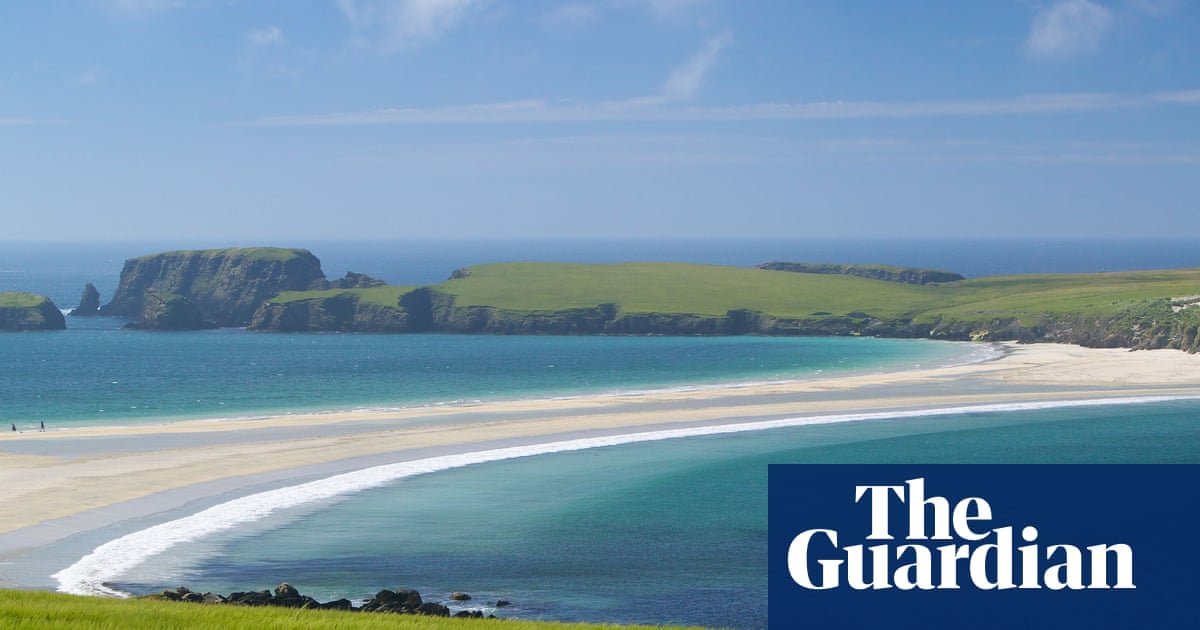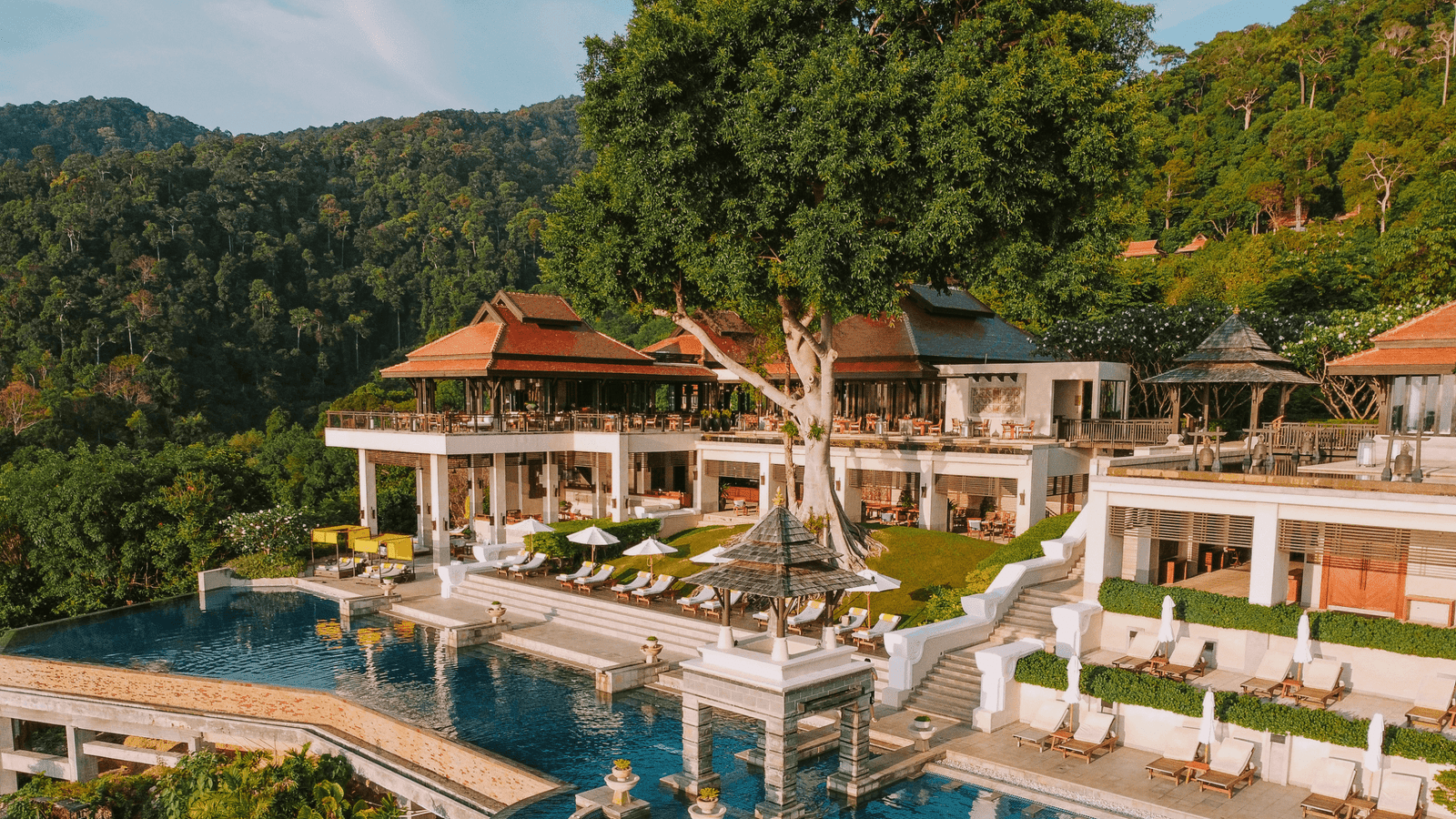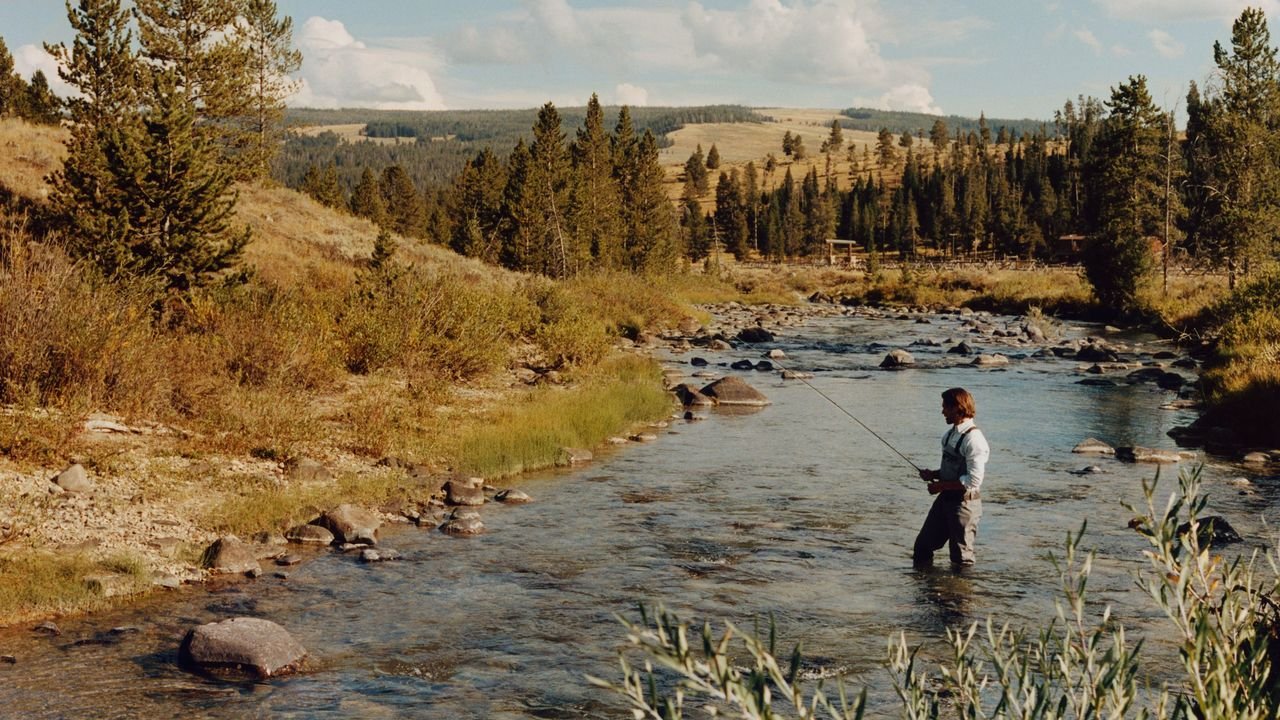Solo Travellers
The ‘wow’ factor: island hopping and otter spotting on a family break in Shetland | Scotland holidays

It takes us 38 hours – two trains, a tube, the Caledonian Sleeper, a day in Aberdeen, a hire car and the NorthLink ferry – to reach Shetland from our home in Oxfordshire, and yet the immortal words “Are we there yet?” are not uttered once. When the ferry docks at Lerwick, the kids, Lydia (11) and Alex (eight), are uncharacteristically silent as we take in the view: the town huddled on a low hill, the water shimmering in the morning sun, and islands as far as the eye can see.
We are spending a week in the archipelago, travelling first around Mainland, the main island, and then north to the less populated islands of Yell and Unst, linked by regular ferries. It turns out to be the perfect location for a family holiday: short journey times (it takes 80 minutes to drive from the southern tip of Mainland to the northern) combined with the sea almost always being in view, and the excitement of a boat or ferry trip every day.
On Mainland, we base ourselves at Hayhoull B&B. Mary, the owner, makes us feel like part of her family and cooks us delicious dinners that even my picky son doesn’t turn his nose up at. We wake to spectacular views of St Ninian’s Isle, before heading to Lerwick harbour to join a boat trip with Shetland Seabird Tours. Skipper Phil tells us we’ll be sailing up to Noss island to see the gannet colony. Alex turns to me with wide eyes. “They dive like missiles!” he whispers excitedly.
First, though, we see eider ducks, paddling just outside the harbour, and fulmars in cosy pairs on the cliffs. The latter, Phil tells us, “have a nasty defence mechanism against birds of prey – they vomit on them and ruin their flight feathers”. The kids are delighted and repulsed at the same time. Then there are sentry-like shags inside a cave, crowds of black guillemots and a solitary puffin bobbing on the waves, which sends a ripple of excitement around the boat.
But it is those gannets that steal the show. They appear as we approach the uninhabited, sheer-cliffed island of Noss, unmistakable with their pointed white beaks and yellow head feathers. As the birds (about 600–700 according to Phil’s estimate) circle and call above us, Phil submerges a long metal tube in the water; he throws a mackerel down it and within seconds the first gannets are folding their wings back and in and shaping themselves into bird torpedoes, before plunging bullet-like into the deep blue water. It is a phenomenal sight. The only word I hear out of either child for the next 15 minutes is “Wow!”
In fact, if there’s a word that characterises our visit to Shetland, “wow” is it. At Jarlshof prehistoric and Norse settlement, where thousands of years of human habitation are revealed in the remains of countless buildings, the kids wander off happily with their audio guides, pointing things out to each other with glee; what I had anticipated being a 10-minute visit takes us an hour and a half.
Just down the road is Sumburgh Head lighthouse, where the season’s first puffins have recently arrived. We listen to a recreation of the sound of the lighthouse foghorn that is so loud the kids cover their ears, and climb up the foghorn tower to see the land drop away into the seemingly endless sea.
Another boat trip takes us out to the small, uninhabited island of Mousa, an RSPB nature reserve. A huge broch (an iron-age circular tower unique to Scotland) stands on its south-western shore; though it’s closed on our visit, we peer through the gate to look at the layered stone interior and imagine the people and animals that would once have lived there. We have three hours on Mousa, and spend them wandering the two-mile path around it at a leisurely pace, losing time watching seals play in East Pool and spotting nesting fulmars. “Stay away from them,” Alex tells us. “You don’t want to be sicked on.”
Back on land, we walk the short distance from our B&B to St Ninian’s Isle, reached via the UK’s largest active tombolo (a sand bar). The kids immediately whip off their shoes to submerge their feet in the soft white sand; while they play, my husband and I walk across to the island. From the top, we have a clear view of both the kids and the skerries (small rocky islands and reefs) that pepper the isle’s south side.
Just up the road is West Lynne croft (small farm), where the multitalented Cecil Tait shows us around and demonstrates the skills of his sheepdog, Bess, who is convinced that we need herding too. Tait, who also makes furniture and wool, and runs woodworking courses, tells us that all the while we’re talking he’s translating in his head from his native Shetland dialect into English. I watch the kids digest this. “Wow, Mum,” Alex says afterwards, “I didn’t know English wasn’t everyone’s main language here.”
The next day, we head for Unst, the archipelago’s most northerly island. Getting there involves driving through Mainland and the neighbouring island of Yell, and two short ferry journeys (Mainland to Yell, and Yell to Unst), with the excitement building as we go. Most people come here for the birds and dramatic coastal scenery of Hermaness national nature reserve, on the northern tip of the island, but we decide against a three-and-a-half-hour walk battling the wind (and the children). Instead, we opt to head along the south coast with Catriona Waddington, the chair of Wild Skies Shetland, which has set up interactive “sky stops” to help visitors explore the island.
after newsletter promotion
We walk for a mile along the blue-tinted sands of Easting beach and then above the rocky shoreline to one of the stops, Framgord. A listening post invites us to hear a Norse story or a fiddle tune that Catriona says “always makes people waltz”. The kids are soon doing exactly that. That night, they sleep – much to their excitement – in traditional alcove beds at the elegant Belmont House.
En route back to Mainland, we pause in Yell for the afternoon, spending more than two hours wandering its gentle north-eastern shoreline on an otter-watching tour with Brydon Thomason of Shetland Nature. Armed with binoculars, the kids tramp happily for miles, stopping every time Brydon does, to join him in scanning the shore and water.
There are no complaints about the cold or the distance; there is too much to learn about otters, such as how we have to walk downwind so they can’t smell us, and how to identify their toilets. Brydon has been otter–spotting since he was Alex’s age. “I was excited by the thrill of how hard they were to find,” he tells us. “It’s like being a detective in nature.”
The kids are clearly happy being detectives, too. But when the shout to “Get down!” comes, they are more than ready, dropping straight on to their fronts as we follow Brydon’s instructions to crawl on to the beach. There, in the water, is the slick, dark curve of an otter.
Brydon sets up his camera so the kids can take photos when the otter comes on to the shore. When she does, though, she is not alone; she is with her two cubs and is busy demolishing an octopus she has caught. We watch, through binoculars and Brydon’s camera, in a silence that is broken only by emphatic wows. “This is why I do it,” Brydon says with a smile. “For reactions like these.”
In Shetland, it seems to me, they are the only reactions to have.
The trip was provided by visitscotland.com and shetland.org. Transport to Scotland was provided by Caledonian Sleeper, and transport to Shetland by NorthLink Ferries. The best time to see most seabirds is from May to the end of August, though puffins tend to head back out to sea in August
Solo Travellers
6 Affordable Hotels in Thailand to Fulfill Your “White Lotus” Dreams on a Budget

The first luxury hotels in Thailand opened over a century ago, but the nicest affordable hotels in Thailand promise an equally memorable visit without the hefty price tag. Alongside sprawling Four Seasons, Mandarin Orientals, and Ritz Carltons are beautiful, credit card–pleasing boutique hotels and independent resorts that, if you book the right room at the right time of year, will let you revel in luxurious facilities without spending a fortune. Whether you’re traveling around the country, in need of somewhere to stay to complement your two-week itinerary, or sticking to one of the best islands in Thailand, finding the right hotel can really enhance the experience. From where to stay on infamous islands like Phuket and Koh Samui (home to the uber-luxe White Lotus properties) to lesser-known hotspots like Koh Yao Noi, here are a handful of the best affordable hotels in Thailand.
How we choose the best affordable hotels in Thailand
Every hotel review on this list has been written by a Condé Nast Traveler journalist who knows the destination. When choosing hotels, our editors consider properties across price points that offer an authentic and insider experience of a destination, keeping design, location, service, and sustainability credentials top of mind.
Solo Travellers
Travelling to Japan this summer? Beat the heat with these cooling dishes

Once caught, the noodles are dipped in tsuyu (a chilled, umami-rich sauce made from soy, mirin and dashi) then slurped down between bites of tempura or cool slices of cucumber. “It’s the perfect dish for summer when the heat dulls your appetite,” says Ishi Take, director at Chihonoie. “Nagashi somen is light, refreshing and easy to eat – even when [it’s so hot outside that] nothing else sounds appealing.”
He adds, “We get all kinds of visitors here – parents with kids, couples, even travellers from overseas. Everyone gathers around the bamboo flumes, laughing and trying to catch the noodles. It’s not just a meal; it’s a shared summer memory.”
Solo Travellers
Big Sky Remains Good for Ski and Snow, But Summer Has Entered the Chat

Last year the rustic-chic Lone Mountain Ranch unveiled Auric Room 1915, a members-only supper club and venue where overnight guests can retreat into cowhide-swathed booths to enjoy fried chicken and pours of 18-year-old Elijah Craig bourbon. True to its cattle-ranch roots, the hotel still devotes Thursday nights all summer long to the rodeo, a rowdy, locally beloved spectacle of cowboy and cowgirl culture complete with Montana beef brisket sandwiches and plenty of beer.
Finally, in the Spanish Peaks, Montage Big Sky, which opened in 2021, expanded its lodging options last year with 47 new residences—including 15 freestanding Mountain Homes, each with five or six bedrooms—adding to the resort’s 100 original rooms and suites. Guests can take advantage of all the hotel’s perks, such as access to Crazy Mountain Ranch, an 18,000-acre working cattle ranch with ample terrain for horseback riding; an 18-hole golf course; and summertime outdoor excursions like heli-fly-fishing tours that take guests to remote stretches of the Yellowstone and Missouri Rivers.
This article appeared in the July/August 2025 issue of Condé Nast Traveler. Subscribe to the magazine here.
-

 Mergers & Acquisitions1 week ago
Mergers & Acquisitions1 week agoHow Elon Musk’s rogue Grok chatbot became a cautionary AI tale
-

 Mergers & Acquisitions1 week ago
Mergers & Acquisitions1 week agoAmazon weighs further investment in Anthropic to deepen AI alliance
-

 Brand Stories2 weeks ago
Brand Stories2 weeks agoVoice AI Startup ElevenLabs Plans to Add Hubs Around the World
-

 Mergers & Acquisitions2 weeks ago
Mergers & Acquisitions2 weeks agoUK crime agency arrests 4 people over cyber attacks on retailers
-

 Asia Travel Pulse2 weeks ago
Asia Travel Pulse2 weeks agoLooking For Adventure In Asia? Here Are 7 Epic Destinations You Need To Experience At Least Once – Zee News
-

 AI in Travel2 weeks ago
AI in Travel2 weeks ago‘Will AI take my job?’ A trip to a Beijing fortune-telling bar to see what lies ahead | China
-

 Mergers & Acquisitions1 week ago
Mergers & Acquisitions1 week agoEU pushes ahead with AI code of practice
-

 Mergers & Acquisitions2 weeks ago
Mergers & Acquisitions2 weeks agoChatGPT — the last of the great romantics
-

 The Travel Revolution of Our Era1 month ago
The Travel Revolution of Our Era1 month agoCheQin.ai Redefines Hotel Booking with Zero-Commission Model
-

 Mergers & Acquisitions1 week ago
Mergers & Acquisitions1 week agoHumans must remain at the heart of the AI story

You must be logged in to post a comment Login